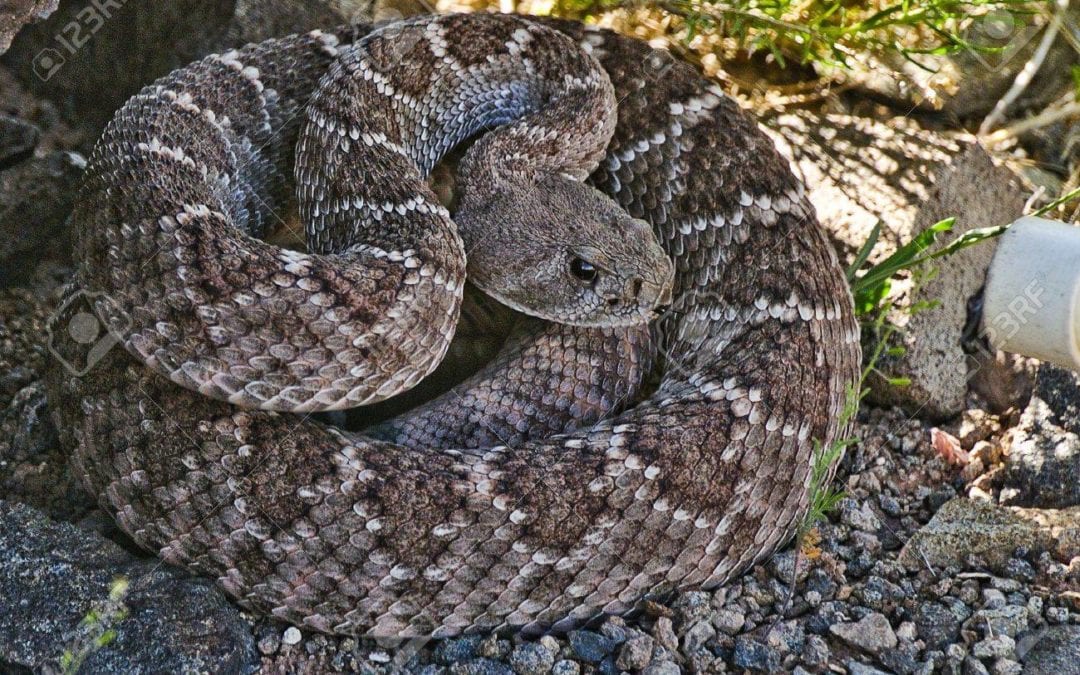We frequently get asked about or see dogs and cats that come in after being bit or stung by arachnids, insects or snakes. How do you know if your dog or cat has been affected? The typical insect reaction that we see presents with pets having a swollen face, especially around their eyes and muzzle. They may have a paw swollen and can also present with hives. Once in a while, they will present collapsed and with bloody diarrhea but that is not terribly common.
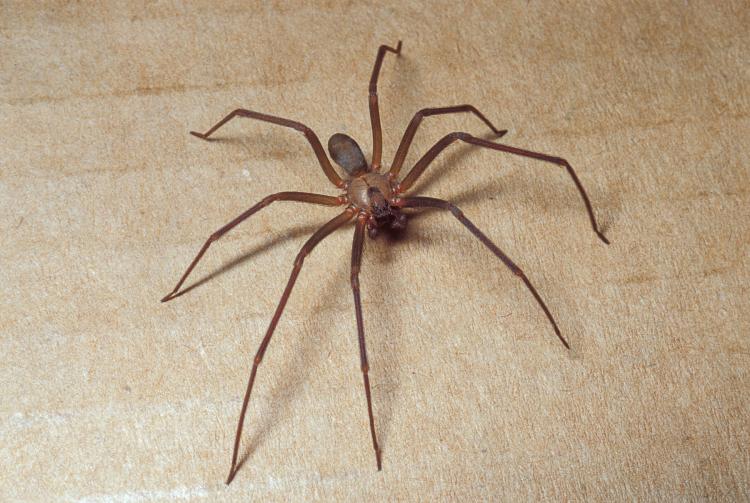
So what is out there that is biting our pets? Unless it was a Rattlesnake bite, I won’t be able to tell you exactly what stung your pet because there is rarely evidence left to tell us what creature was to blame. The most common scenario is a pet who has just come in from outside but I have also seen many pets who were sleeping with their owner, had never left their kennel and have never stepped outside. So unfortunately at times, the creature is likely in your house.
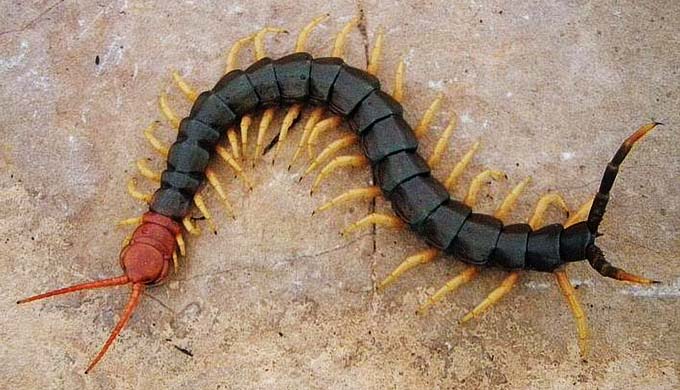
Bees are often to blame with dogs that are trying to catch them in the air. Scorpions are another possible culprit. The ones we have here in Central Texas do sting but they typically aren’t lethal. Red Headed Millipedes, Black Widows and Brown Recluse are also things to watch out for but honestly, I haven’t seen a case where we know 100% that one of these was to blame, so I can’t give a lot of insight here.
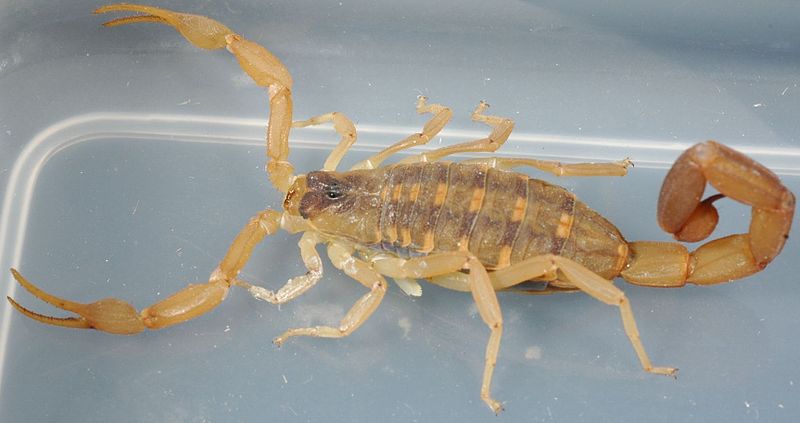
We have something called a Tarantula Wasp. These wasps sting and pick up Tarantulas and can also give a very painful but not usually lethal sting to our pets.
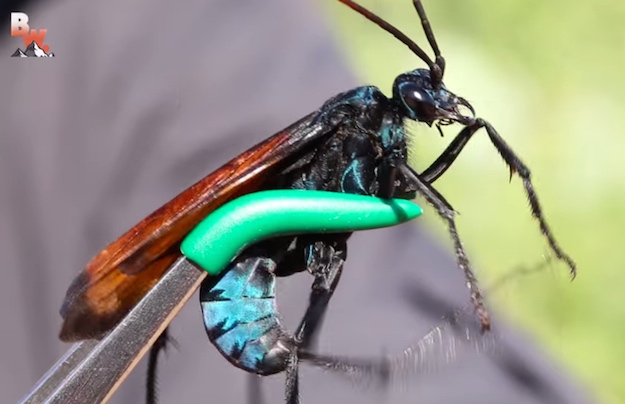
You saw me mention not usually lethal a few times above. Typically these bites result in swelling and some discomfort. A pet just like a human can have an atypical reaction so it is always advised to get medical care. Some reactions can be delayed from a bite and signs show up several hours later. I have seen some pets present in a collapsed state where we have suspected a bite of some sort due to the way they presented and being 100% normal before they went outside. These episodes are rare.
As many of you know, we have a Fire Ant problem here. Typically they leave the same type of lesion on dogs and cats as they do on us…a small or several small pimple-like masses. Occasionally these get infected from your pet licking them..just like they do in us. They should resolve quickly. If your pet isn’t bothering them then leave them alone. On rare occasions, small dogs will get into a large colony of ants and will get overcome in 1000s of these toxic little beasts. This is a life-threatening situation. Put your pet in the bathtub and use water to help remove as many as you can, then bring your pet to us.
What to do:
If you notice that your pet has swollen eyes/muzzle/paw and/or hives please bring them in to get seen. You can give your pet 1mg/lb of Benadryl but we will likely want to give the injection form if they are really swollen. We will check vitals and assess airways and for signs of more serious side effects. Typically we give an injection of Benadryl and an injection of a short-acting steroid to get the swelling down fast. Some pets will require similar medications for a few days. In rare cases, I will see a pet present with red dots/hives and require a second treatment a day or two later.
Snake bites:
- Copperheads: cause moderate to severe swelling. Most pets can get by with supportive care especially pain meds. Occasionally we get bites that require antivenin.
- Water Moccasin: same as the Copperheads
- Coral Snake: these red/yellow/black snakes are lethal. Remember “red on yellow kills a fellow”. Luckily these guys are not aggressive and usually just want to run away. They have to actually chew on your pet in order to get venom transmitted. We do not have antivenin for these guys. Treatment would be supportive care potentially on a ventilator. Luckily we don’t see bites from these guys very often. I have never seen one and I know one doctor in town that has seen one.
- Rattlesnakes: we have the Western Diamondback Rattlesnakes here. They get big and are aggressive. I have seen recent articles and lived in areas where treatment consisted of Benadryl, steroids and fluids. I have seen articles stating that you don’t need antivenin. All of that does not apply to the snakes we have in our area. If your pet is bitten by a rattlesnake then it needs antivenin ASAP. Do not use a tourniquet and do not give Benadryl. Get your pet to our hospital or the nearest emergency room ASAP. Call ahead and make sure Antivenom is available. We stock it as do the Animal Emergency Rooms but it is always good to make sure it is available.
- How do you know if your pet has been bitten by a Rattlesnake?
a. You saw the snake bite your pet
b.The bites are more painful than the insect bites mentioned above. Typically you can see the bleeding bites wounds and there will be bruising around the bites. The severity of the bite can depend on if the snake recently ate, if it was an offensive or defensive bite and even the season as their venom is different year to year. A dry bite is a bite where no venom was injected. This causes pain and maybe some local effects but typically the reaction stops there. - What harm does the venom do?
The venom as mentioned above can change from season to season but typically causes tissue to die at the location of the bite, severe swelling, it disturbs clotting times and can eventually end up with tissue necrosis. - Treatment (costs around $1000-$5000)
Includes an IV catheter and immediate Antivenom administration. Expect 1-2 vials depending on the size of your pet and the severity of the bite. Small dogs oddly enough often require more than a larger dog. Pain meds are given then your pet will be hospitalized on fluids and their labs and swelling monitored until swelling is down and clotting times are normalizing. Some dogs do very well and respond quickly and others aren’t as fortunate. Being bitten does not make your pet immune from needing treatment from other bites - Prevention
a. Keeping your property trimmed and your dog away from thicker brush although snakes can be found in garages or in plain sight.
b. Snake Avoidance Training: a shock collar is used which I’m not usually a fan of but in this case it could save your pet’s life. Your dog is introduced to a devenomized snake and given a shock when they get close. The introduction is made again to see if your dog pulls back, if not a second shock is given. Rarely do dogs need more than one or two shocks. Most places offer refresher classes each year included in their fees.
c. Rattlesnake vaccine: the efficacy of this vaccine is not known. Since every rattlesnake bite is different, it is hard to do a study on this. We carry this vaccine due to requests from hunters who believe that their dogs that were vaccinated had less morbidity and less death when they were vaccinated. I do have clients who have a large exposure to snakes and are wanting to do anything they can in the case that their dog is bitten.
BEING VACCINATED DOES NOT MEAN THAT YOU HAVE MORE TIME TO GET TO THE VET, IT DOES NOT MEAN THAT YOUR DOG WILL NOT NEED ANTIVENIN.

